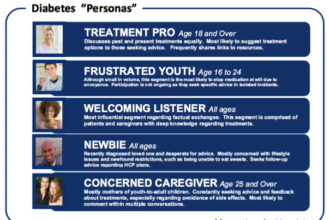Most people know that brushing and flossing are essential to keep your teeth and gums healthy. Despite this fact, health officials estimate that almost half of Americans struggle with gum disease or periodontitis—a more advanced form of gum infection that can affect the tissues, roots, and bones that surround teeth. Simple steps can help most adults remove irritating bacteria from the gum line and reduce the likelihood of gum disease—but for people with diabetes, this process is especially challenging and important. How Bacteria Trigger Gum Disease Bacteria in the mouth release toxins. These toxins trigger a complex inflammatory response when they are not removed and will work themselves deeper into the gums causing gum line pockets along with cavities, destruction of supporting bone, and tooth loss. Researchers have found that having diabetes multiplies the severity of infection and if left untreated the infection may even affect your ability to regulate your blood sugar levels. Periodontal disease is said to be the sixth most common diabetic complication. In addition to daily brushing and flossing, here are some ways you can help prevent or manage gum disease: · Keep your blood sugar under control. First and foremost, keep your glucose levels where they should be. This means following your recommended diet and checking your blood sugar as instructed by your doctor. Take your insulin as ordered—some insulin pumps have glucose monitoring integration and touchscreen operation to make glucose management easier. · Keep checkups with your dentist. See your dentist twice a year at minimum and try not to skip appointments. Regular cleanings by a dental professional can mean early identification of problems before they get worse and can help preserve your dental health. · Make sure your dentist knows.Let your dentist know that you have diabetes—be open with your oral care provider about your health and let him or her know if there have been any changes in your diabetes management or medications. If you are having a hard time keeping your blood sugar under control, you may need to consider postponing any oral surgeries or procedures. Talk to your dentist and your primary care physician before making any decisions. · Report any changes in your oral health right away. Symptoms of gum disease start slowly and you may not notice a problem until it has progressed. Some signs of gum disease include redness, swelling, or bleeding at the gum line, gums that are pulling away from your teeth, bad breath, changes in the way your teeth or dentures fit together, or pus between your teeth and gums. Report any of these problems to your dental professional right away. Having diabetes can make gum disease worse or more difficult to treat. Remember that the mouth isn’t an island—the health of your teeth and gums can directly affect the health of your entire body—so take steps now to protect your smile and your overall health.
Healthy Smiles: Ways to Keep Your Mouth Healthy With Diabetes
Ryan Kh is an experienced blogger, digital content & social marketer. Founder of Catalyst For Business and contributor to search giants like Yahoo Finance, MSN. He is passionate about covering topics like big data, business intelligence, startups & entrepreneurship. Email: ryankh14@icloud.com







